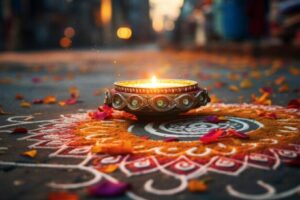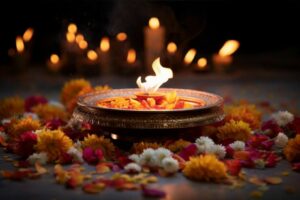Bengali culture, rich and diverse, is a vibrant tapestry of traditions, art, and history that has evolved over centuries in the region of Bengal, now split between Bangladesh and the Indian state of West Bengal. Known for its profound literary contributions and artistic expressions, Bengali culture has a unique charm that captivates those who explore its depths. From the melodious strains of Rabindra Sangeet to the intricate patterns of traditional crafts, it offers a sensory feast.
The heart of Bengali culture lies in its festivals, cuisine, and language, which bind communities together in celebration and shared heritage. Durga Puja, the grandest festival, showcases the region’s artistic prowess and religious fervor, drawing people from all walks of life. Meanwhile, the culinary landscape, with its tantalizing flavors of fish, rice, and sweets, reflects the warmth and hospitality of the Bengali people.
What is Bengali Culture
Bengali culture embodies a vibrant tapestry rich in traditions and artistic endeavors. Rooted in the Bengal region—encompassing Bangladesh and West Bengal, India—it reflects profound literary, musical, and culinary traditions.
Literary Contributions

Renowned for its literary heritage, Bengali culture boasts Nobel laureate Rabindranath Tagore. His works, including “Gitanjali,” highlight the depth and richness of Bengali literature. Modern Bengali authors like Satyajit Ray extend this legacy through varied narratives.
Music and Dance
Music forms a vital part of Bengali culture with Rabindra Sangeet and Baul folk music exemplifying its diversity. Dance styles such as Gaudiya Nritya showcase traditional storytelling through graceful movements.
Festivals
Festivals like Durga Puja and Pohela Boishakh provide glimpses into Bengali cultural vibrancy. Communities unite to celebrate these occasions with elaborate rituals, vibrant decorations, and traditional food.
Culinary Arts
Bengali cuisine offers a unique blend of flavors underscored by the pervasive use of mustard oil, fish, and rice. Iconic dishes include Hilsa curry and Sandesh, reflecting cultural nuances and culinary expertise.
Art and Craft
The art scene boasts intricate crafts like Kantha embroidery and terracotta sculptures. These crafts articulate the region’s aesthetic values and historical influences, celebrated worldwide for their detail and creativity.
Historical Background
Bengali culture’s roots stretch deep into ancient and medieval times, evolving significantly during the modern era.
Ancient and Medieval Periods

The region of Bengal first appeared in ancient texts like the Mahabharata and inscriptions from the Gupta Empire. It was a center of learning and spirituality, with Nalanda and Vikramshila drawing scholars across Asia. Buddhism thrived, leaving a lasting influence that’s evident in art and architecture. The Pala Empire (8th-12th century) fostered a golden age for Bengali culture, marked by advancements in education, sculpture, and literature. Following the Palas, the Sena dynasty continued cultural patronage, focusing on Hinduism and the promotion of Sanskrit literature, which coexisted with vernacular traditions.
Modern Era
Bengal experienced significant transformation during the British colonial period. The 18th and 19th centuries witnessed the Bengal Renaissance, a pivotal cultural and intellectual awakening. Visionaries like Raja Ram Mohan Roy propelled social reforms and advocated for educational advancements, while Rabindranath Tagore and Bankim Chandra Chattopadhyay shaped modern literature and arts. The partition of Bengal in 1947 led to further cultural evolution, as it impacted social structures and artistic expressions, reflecting a blend of traditional ethos and contemporary themes.
Festivals and Traditions
Bengali culture is renowned for its vibrant festivals and traditions, deeply rooted in spirituality and community bonding. These celebrations reflect the region’s devotion and joy.
Major Bengali Festivals

Durga Puja, a significant Hindu festival, epitomizes devotion to the goddess Durga. It occurs annually in September or October. Celebrations are marked by elaborate rituals, artistic pandals, and cultural performances. Pohela Boishakh, the Bengali New Year, takes place in mid-April. It’s celebrated with traditional music, dance, and fairs, emphasizing joy and renewal. Eid al-Fitr sees extensive participation in Bangladesh, showcasing unity and charity. Marking the end of Ramadan, it includes communal prayers and elaborate feasts. Saraswati Puja, dedicated to the goddess of wisdom, engages students who seek blessings for academic success.
Deep-Rooted Cultural Values
Bengali culture, with its profound literary, artistic, and culinary traditions, stands as a testament to the region’s rich historical tapestry. From the timeless works of Rabindranath Tagore to the vibrant festivals that unite communities, it embodies a harmonious blend of tradition and modernity. The evolution of social norms and family structures reflects a dynamic society adapting to contemporary challenges while honoring its roots. Through its language, music, and art, Bengali culture continues to inspire and connect people beyond geographical boundaries, offering a unique and enduring cultural legacy.

